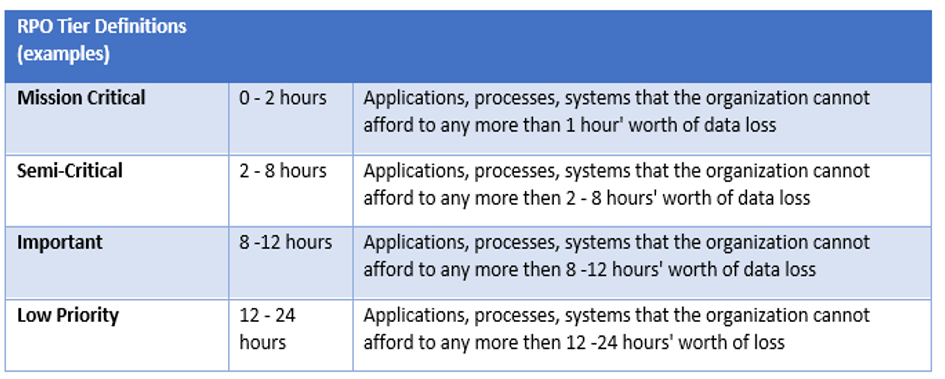Two Questions Every IT Disaster Recovery Plan Should Answer

Disasters come in a variety of forms. While the word disaster initially conjures up mental images of hurricanes, tornadoes, and earthquakes, employee theft, phone system failure, and power outages are also types of disasters that can interrupt service to constituents. Whatever the scale of the event, having an actionable plan is the key to answering two critical questions:
- How long will it take to recover?
- How old is the data?
The following considerations go into answering both questions. Preparation and consideration of each area will result in realistic recovery expectations when collaborating with each of your nonprofit's departments. Tech Impact has created a Disaster Recovery Planning process that includes a template to help you ensure that you have all the foundational information available to answer these critical questions and make them actionable to protect your organization.
Defining "Fast"
The rate of recovery speed an organization can achieve after experiencing a disaster is referred to as the Recovery Time Objective (RTO). The faster the recovery, the more expensive it is to set necessary systems in place. Often, there is a disconnect between expectations and reality—especially when everything is commanding attention. Prioritizing which operations need to recover first is a powerful component of planning. A speedy recovery includes increased redundancy, eliminating Single Points of Failure (SPOF), and having working backups.
Components of IT planning—policies and frameworks—are the foundation of creating this definition.
Increase Redundancy
Duplication, mirroring, and cross-training are common terms for creating redundancy of devices, data, systems, and staff. Redundancy across many levels of your organization is critical assurance that when something fails or someone is unavailable, operations will continue. Redundancy is at risk in organizations because it can be seen as an additional expense when nonprofits need to trim budgets. These expenses that come in the form of software and hardware, time committed to cross-training employees, and the prioritization of operations should be carefully analyzed. Without redundancy, your organization most likely needs to take action to address the next step in securing a fast recovery, eliminating single points of failure.
Eliminate Single Points of Failure
If your answer to finding frequently misplaced files or remembering passwords is to ask a certain person on your staff, you may have a single point of failure. A power outage without a generator and an on-premise server without a backup are other common examples. IT planning for a disaster reveals flaws in your organizational processes and allows you to remove this risk. In small nonprofit organizations, leadership roles often find themselves responsible for this initiative.
Working Backups
Your organizational choices related to when it creates current backups are the beginning of the answer to the second question, "How old is your data?" This concept is known as the Recovery Point Objective (RPO) and defines your nonprofit's tolerance level for lost information. The pace at which your organization produces critical operational data will dictate the frequency needed for backups. It will also determine the acceptable age of your data.
How much data might you lose in an hour, a day, or a week? Considering how much of your data needs to be backed up in addition to how frequently will determine the level of investment needed to recover quickly. Cloud infrastructure, compliance, device and identity management are some of the topics your organization may review when considering solutions.
Nonprofits often delay disaster planning until they experience an unfortunate event or are required to provide documentation for insurance coverage. Tech Impact's Disaster Recovery Planning process is the perfect place to prepare with core components included in our process. With our template and your commitment to gathering the information, your nonprofit can have an affordable plan within a few weeks.
Building a plan that answers the speed and quality of data needed to recover is an opportunity to think about the many "what if" situations while in a calm and rational state of mind. To learn more about disaster recovery planning, download our free article, Disaster Recovery: Planning Ahead for the Unthinkable, consider registering for our upcoming Disaster Recovery webinar, or complete the form to the right and schedule a consultation with a tech advisor.
George Staton is Tech Impact’s Backup and Recovery Engineer. He has an extensive background in disaster recovery and system architecture. Managing IT disaster planning and business continuity globally, George has successfully shepherded clients through post-disaster recovery after 9/11, Hurricane Sandy, and many others.

